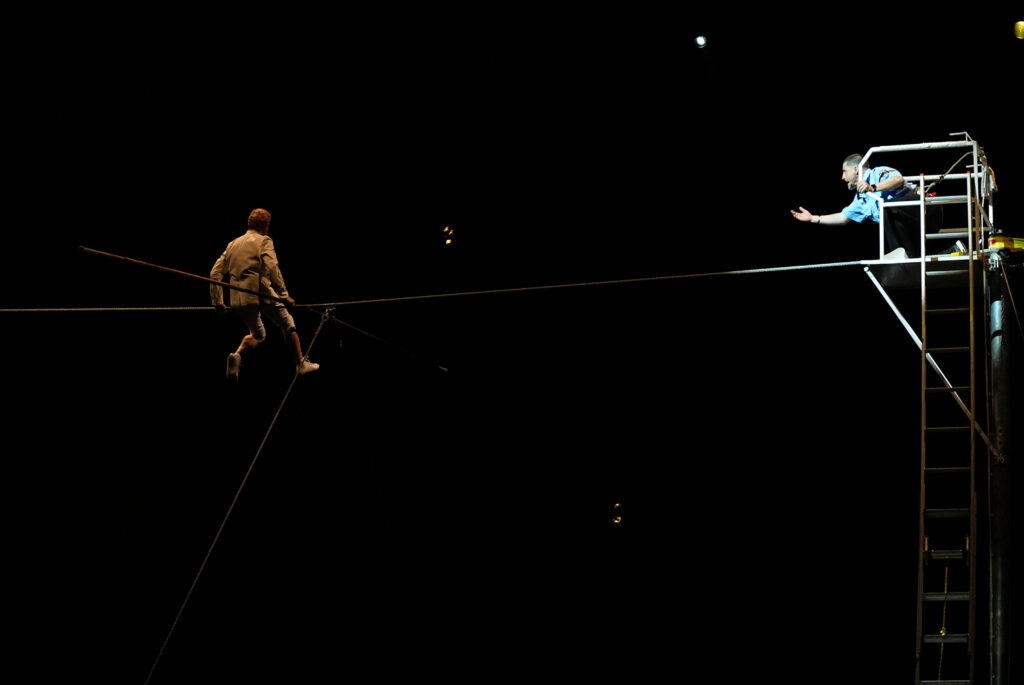NASA's first astronaut mission into deep spaceKaround the moon won't happen this year, agency officials say, citing several technical and hardware issues that could jeopardize crew safety.
The announcement of a delay for the Artemis II mission, previously slated for this November, came during a news teleconference on Jan. 9. The space agency is now working toward a September 2025 launch, with Artemis III, the first moon-landing attempt with astronauts in a half-century, also pushed back to September 2026.
Building extra time into the schedule will allow engineers to conduct more tests on the Orion moonship, Space Launch System rocket, landing system, new spacesuits, and Gateway, a yet-to-be-built lunar space station. NASA officials said new circuitry and battery issues have surfaced that will need to be addressed, and they continue to investigate a problem with the spacecraft's protective heat shield.
"We are facing challenges, both technical and just dealing with going back to the moon, but the Artemis team is solving them," said Jim Free, NASA associate administrator.
SEE ALSO: NASA reveals its moon spacecraft was damaged as it plummeted to EarthThis Tweet is currently unavailable. It might be loading or has been removed.
The Artemis II mission is expected to build upon the success of Artemis I, an uncrewed test flight of Orion that sent the moonship on a 1.4 million-mile voyage in 2022. The sequel mission will test-drive the spacecraft for about 10 days with human passengers, whizzing by the moon without ever landing on it.
A successful Artemis II flight would pave the way for NASA to put astronauts back on the lunar surface during Artemis III. The agency has promised that mission will see a woman and person of color walk on the face of the moon for the first time.
Even if Artemis II had not required extra time, the subsequent moon-landing mission would still need to be delayed because of lagging SpaceX progress, according to NASA. The space agency tapped billionaire Elon Musk's company to develop a human landing system version of his Starship with a $4 billion contract for Artemis III and IV.
"We are facing challenges, both technical and just dealing with going back to the moon, but the Artemis team is solving them."
As part of the deal, SpaceX will need to demonstrate an uncrewed test flight to the moon beforehand. So far the company has attempted two Earth-orbiting flights, with both Starships exploding before reaching space.
 The Orion moonship caught Earth rising in the distance as it flew around the moon during Artemis I in 2022. Credit: NASA
The Orion moonship caught Earth rising in the distance as it flew around the moon during Artemis I in 2022. Credit: NASA The Artemis II crew, announced last year, includes NASA astronauts Reid Wiseman, Victor Glover, and Christina Hammock Koch, along with the Canadian Space Agency's Jeremy Hansen. They are expected to become the first people to fly into deep space since the United States' final Apollo mission in 1972.
NASA's decision to delay Artemis II was first hinted at publicly during a call with reporters in August, when space agency officials said they were still investigating damage to the spacecraft's heat shield that occurred on its way back to Earth. Though the crew registered concern about the problem, NASA declined to discuss a final diagnosis — or any changes to plans because of it — until early this year.
"You know every time you see me coming, you take a step back, because I'm coming about the heat shield," said Wiseman, the Artemis II crew commander, during that call. "This crew, we're not going to launch until we know we're ready, until our team knows the vehicle's ready, and we will keep the pressure on."
 If astronauts had been inside Orion during Artemis I, they would not have been harmed during descent to Earth, despite some damage noticed to the heat shield, according to NASA. Credit: NASA
If astronauts had been inside Orion during Artemis I, they would not have been harmed during descent to Earth, despite some damage noticed to the heat shield, according to NASA. Credit: NASA During the maiden voyage, Orion came home faster and hotter than any spacecraft prior, traveling at 24,500 mph in 5,000 degree Fahrenheit temperatures. NASA expected to see some charring, but not to this degree, said Howard Hu, manager of Orion, about a year ago.
"We're seeing larger, like, more little pieces that are coming off versus being ablated," he said then, referring to a type of heat-driven evaporation engineers expected.
NASA continues to study the heat shield and now says it will present its final analysis this spring. But regardless of the unexpected damage, if astronauts had been inside Orion during Artemis I, they would not have been harmed, Amit Kshatriya, deputy associate administrator of the moon-to-Mars program, told Mashable during the teleconference.
 The four Artemis II astronauts are anticipated to hold a place in history as the first space travelers of Artemis. Credit: NASA
The four Artemis II astronauts are anticipated to hold a place in history as the first space travelers of Artemis. Credit: NASA "They would have not sensed any disturbance inside the vehicle, there would not have been any excessive heating on the structure, and the guidance would have put them exactly where the Navy needed to recover them," he said. "There would not have been any impact toward the crew safety if we had that exact same design."
The Artemis II foursome are anticipated to hold a place in history as the first space travelers of Artemis, the new exploration campaign named after Apollo's goddess twin. It's the beginning of NASA's ambitious plan to send humans to Mars by the late 2030s, preparing them for the harsh conditions of another world far less hospitable than Earth.
 Best robot vacuum deal: Save $200 on Eufy X10 Pro Omni robot vacuum
Best robot vacuum deal: Save $200 on Eufy X10 Pro Omni robot vacuum
 Best flower delivery deals: Save up to 30% on Valentine's Day flower arrangements and more
Best flower delivery deals: Save up to 30% on Valentine's Day flower arrangements and more
 Best Apple MagSafe Duo charger deal: Save $50 at Woot
Best Apple MagSafe Duo charger deal: Save $50 at Woot
 Sixth and Seventh Sleepers: Graziella Rampacci and Françoise Jourdan
Sixth and Seventh Sleepers: Graziella Rampacci and Françoise Jourdan
 Best earbuds deal: Save 20% on Soundcore Sport X20 by Anker
Best earbuds deal: Save 20% on Soundcore Sport X20 by Anker
 On Mohammed Zenia Siddiq Yusef Ibrahim’s BLK WTTGNSN by Benjamin Krusling
On Mohammed Zenia Siddiq Yusef Ibrahim’s BLK WTTGNSN by Benjamin Krusling
 Wordle today: The answer and hints for February 7
Wordle today: The answer and hints for February 7
 ESPN, FOX, and Warner Bros. Discovery are teaming up to launch one giant sports streaming service
ESPN, FOX, and Warner Bros. Discovery are teaming up to launch one giant sports streaming service
 This is the fattest of the extremely fat bears
This is the fattest of the extremely fat bears
 Baking Gingerbread Cake with Laurie Colwin by Valerie Stivers
Baking Gingerbread Cake with Laurie Colwin by Valerie Stivers
 Whale Vomit Episode 5: Startup Monarchy
Whale Vomit Episode 5: Startup Monarchy
 Porsche refreshes the Taycan with big range and power upgrade
Porsche refreshes the Taycan with big range and power upgrade
 Is 'The Last of Us Part II Remastered' worth it?
Is 'The Last of Us Part II Remastered' worth it?
 Apple Vision Pro: ChatGPT is now available on the $3,500 headset
Apple Vision Pro: ChatGPT is now available on the $3,500 headset
 Amazon Prime Grubhub deal: Save $10 off orders of $20 or more
Amazon Prime Grubhub deal: Save $10 off orders of $20 or more
 On Asturias’s Men of Maize by Héctor Tobar
On Asturias’s Men of Maize by Héctor Tobar
 Death Is Very Close: A Champagne Reception for Philippe Petit by Patrick McGraw
Death Is Very Close: A Champagne Reception for Philippe Petit by Patrick McGraw
 India gives legal human status to two of its oldest rivers
India gives legal human status to two of its oldest rivers
 The Psychopathology of Everyday Café Life in Freud’s Vienna by Deborah Levy
The Psychopathology of Everyday Café Life in Freud’s Vienna by Deborah Levy
Indian fashion designer celebrates transgender women in her new sari collectionBoeing hypersonic jet could make for 2 hour transatlantic flightsThe Hirshhorn Eye is a museum smartphone guide that's actually coolDoctor no: The women in their 20s being refused sterilisationsDog saved by vet intern moments before being put downThese are hands down the worst food trends in 2018 so farTwitter fights spam bots and malicious accountsYou can now stay at a Teenage Mutant Ninja Turtle themed AirbnbEverything coming to Hulu this JulyPeople with disabilities share how clothes shopping could be made more accessibleFacebook is pushing 'transparency' hard, but it's becoming a crutchDoctor no: The women in their 20s being refused sterilisationsKid tells mom she found a bra in her dad's car, but there's a twistSamsung sends invites to Aug. 9 event; get ready for the Galaxy Note 9I talked to Google's Duplex AI on the phone: Here's what I learnedPush notification short stories are a thing now thanks to this appSamsung sends invites to Aug. 9 event; get ready for the Galaxy Note 9Doctor no: The women in their 20s being refused sterilisationsAmber Riley addresses body shamers in beautiful Instagram rantMemo to 2018 from the 1960s: Forget 'civility.' Get angry. Don't stop. On this Friday the 13th, Flight 666 made a safe landing in HEL Elon Musk's SpaceX absolutely needs its satellite internet business to work George Michael gets the 'rainbow priest' memorial mural he deserves Nintendo Switch's battery life may disappoint you Now you can turn your Apple Watch into a mini retro Macintosh for $15 Don’t freak out, that Nutella cancer study is far from confirmed Take a virtual reality tour of the White House narrated by President Obama India is majorly changing the way its streets light up at night Security experts mock website of Trump's cyber czar At least 1,000 more buses ask to park for Women's March than Trump's inauguration Perfect response to anyone who thinks childcare work is just 'wiping noses' goes viral 'Big Bang Theory' co What’s the best business structure for a first Cool kid pranks store by putting his face on every device The Guardian claims WhatsApp's encryption contains a 'backdoor' Facebook changes policy on editing posts MashTalk: Looking back at the biggest trends of CES 2017 Trump didn't drain the swamp, he created these swamp monsters Yes, the new Rams coach is old enough to drink Paul Ryan didn't give us the dab we wanted, he gave us the dab we deserved